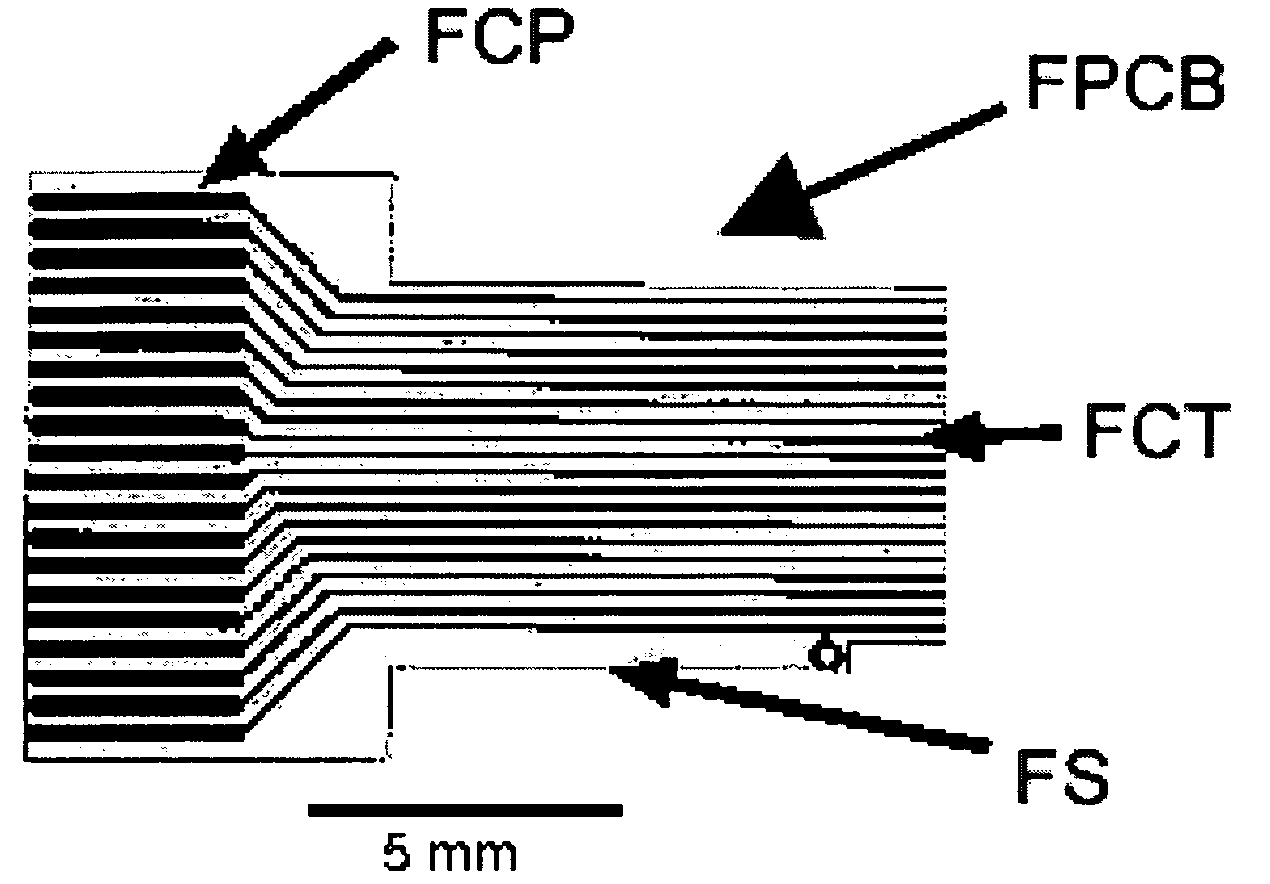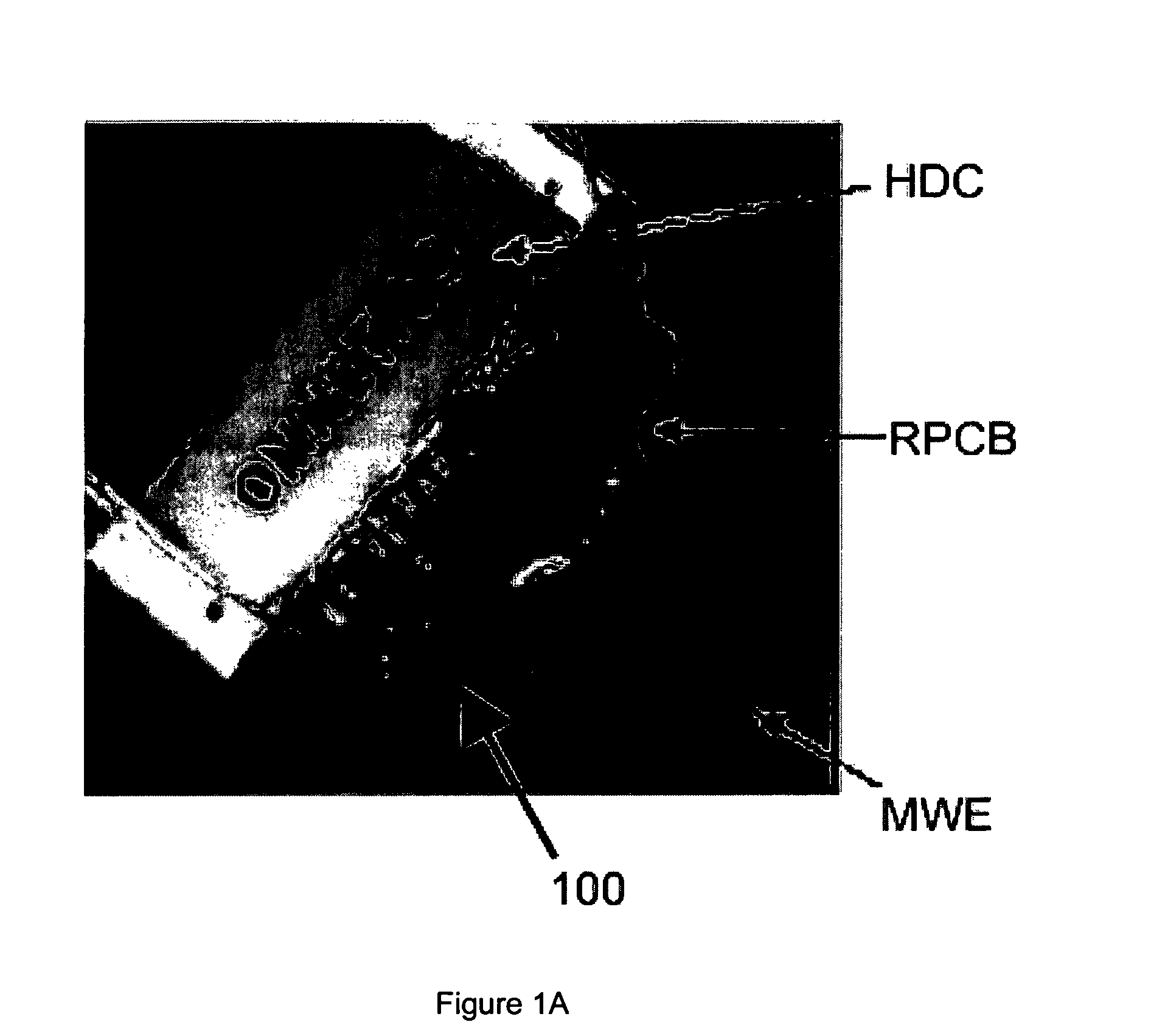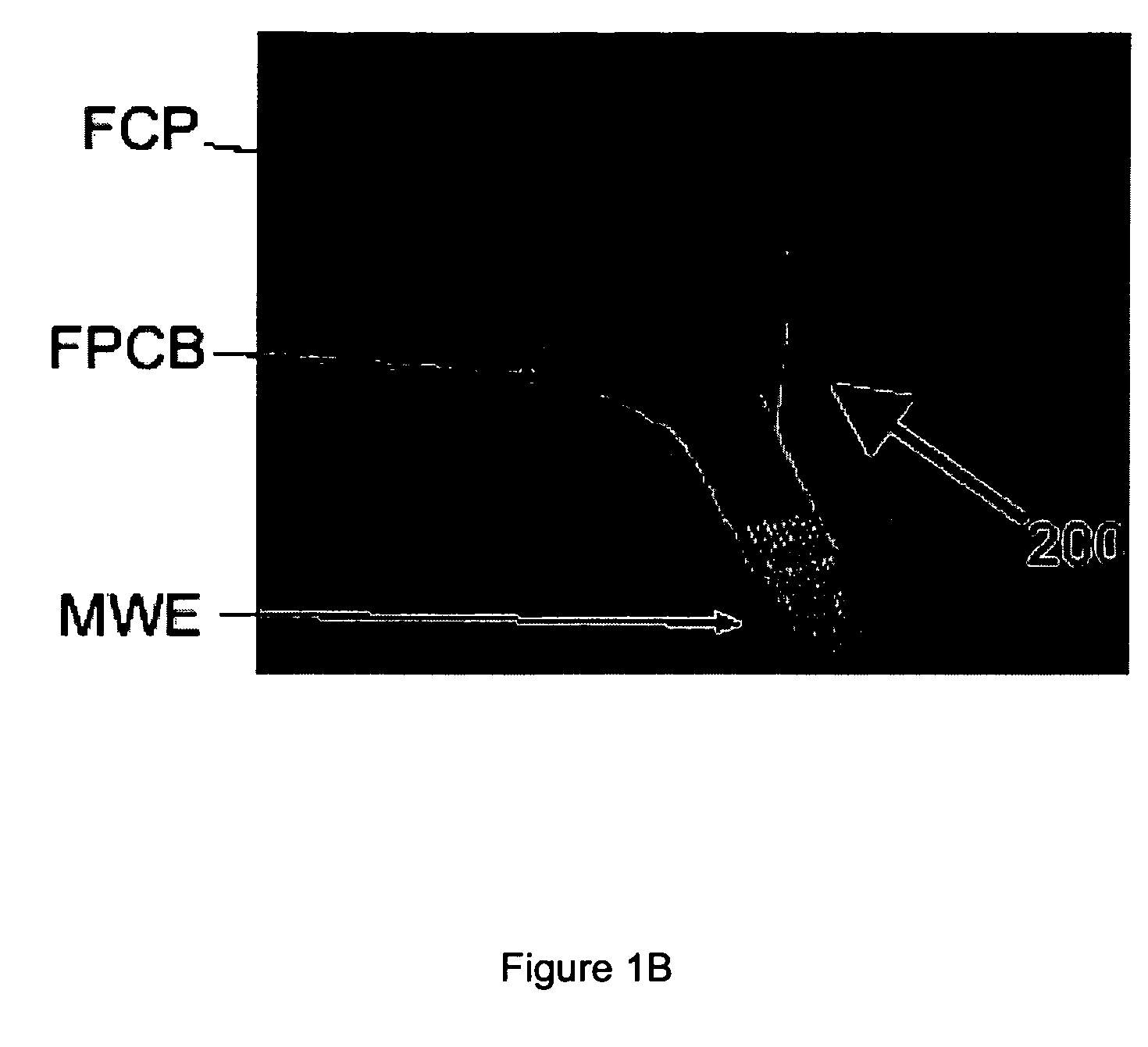Miniaturized high-density multichannel electrode array for long-term neuronal recordings
a multi-channel electrode array, long-term technology, applied in the field of artificial respiration, can solve the problems of limited progress in these fields, limited the density of implanted electrodes to about 32 channels, and prior art multi-channel or multi-electrode devices could only be used in restrained subjects, and were not able to move within the brain
- Summary
- Abstract
- Description
- Claims
- Application Information
AI Technical Summary
Benefits of technology
Problems solved by technology
Method used
Image
Examples
Embodiment Construction
I. Definitions
[0032]Following long-standing patent law convention, the terms “a” and “an” mean “one or more” when used in this application, including the claims.
[0033]As used herein, the terms “actuator”, “external device” and “prosthetic limb” are used interchangeably and mean any kind of device adapted to perform a movement. Although an actuator preferably performs a movement in three dimensions, an actuator can also be limited to performing movements in two dimensions. Thus, an actuator can be a manipulandum confined to two-dimensional motion. A preferred actuator comprises a prosthetic limb, which can be fitted on, or integrated into, the body of a subject. An actuator can also be associated with machinery and / or circuitry that allow the actuator to respond to one or more forms of input with one or more movements. It is also preferable that the range of motion of an actuator designated as a substitute for a patient's lost or paralyzed limb be limited to the range of motion of th...
PUM
 Login to View More
Login to View More Abstract
Description
Claims
Application Information
 Login to View More
Login to View More - R&D
- Intellectual Property
- Life Sciences
- Materials
- Tech Scout
- Unparalleled Data Quality
- Higher Quality Content
- 60% Fewer Hallucinations
Browse by: Latest US Patents, China's latest patents, Technical Efficacy Thesaurus, Application Domain, Technology Topic, Popular Technical Reports.
© 2025 PatSnap. All rights reserved.Legal|Privacy policy|Modern Slavery Act Transparency Statement|Sitemap|About US| Contact US: help@patsnap.com



